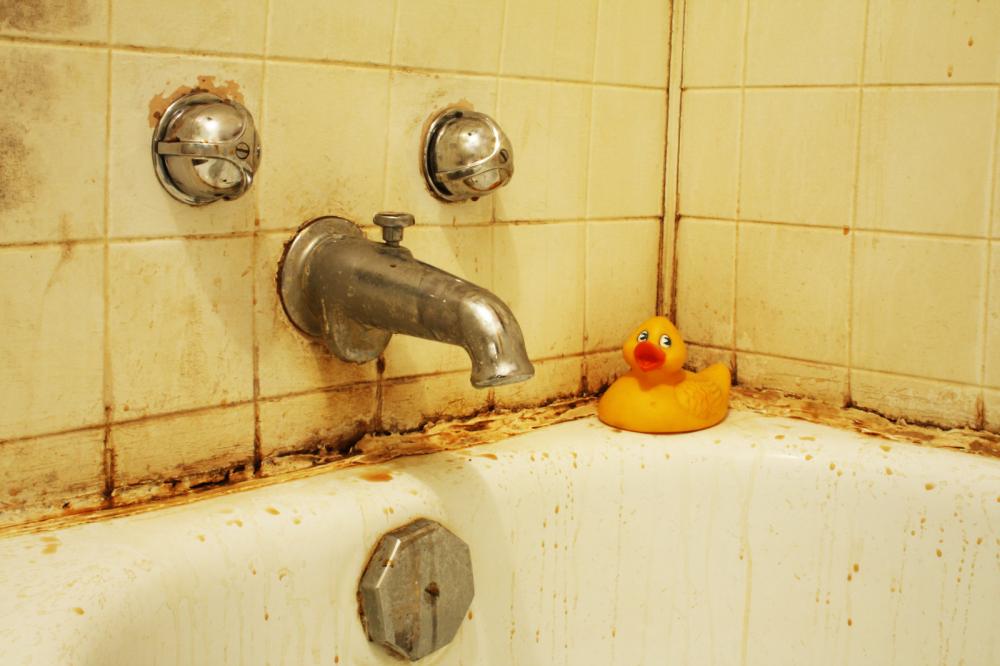Imagine you wake up from a deep slumber and go to the toilet to brush your teeth. With your eyes closed, you turn on the tap and feel an odd sensation as soon as the water falls on your hands. Upon opening your eyes, you see brown, rusty water coming from the tap. You are surprised to see rust in water since you have never experienced this kind of situation before. You might wonder, “Why is my water brown all of a sudden?” We will answer this question. We will share some essential things that you must know about discolored or rusty water.
Rusty or Discolored Water
Tap water can look rusty brown, reddish or yellowish when it contains sediment or mineral in excess amount. Manganese and iron are the two most common materials that can cause discoloration in the water. Tiny mineral deposits can find their way into the main water stream through different sources. These minerals are mostly responsible for the rusty color of the water and unpleasant smells or taste.
Is Rusty or Discolored Water Dangerous?
The answer depends on the minerals that have caused the discoloration of water. However, in the majority of cases, rusty or discolored water isn’t dangerous. The US Environmental Protection Agency regulates the treatment of drinking water supplied to households. The water is treated following primary and secondary standards. Arsenic, lead, and other dangerous contaminants come under primary rules. If their quantity in water exceeds the maximum contaminant level, water isn’t supplied to the public. Contaminants like manganese and iron are covered under secondary regulations. These minerals aren’t dangerous to health; however, they smell, look, and taste bad and can cause skin rash and stain clothing. Public water systems must test for primary contaminants. The EPA doesn’t force testing for secondary pollutants. This means rusty water may find its way into your home water supply, but bathing in rusty water isn’t dangerous.
Causes of Rusty or Discolored Water
If brown water is coming out of a faucet, you might wonder what’s causing the problem. There can be several reasons for the discoloration of water.
Break in a Fire Hydrant or Water Main
If your hot water is rusty or rusty cold water is coming out of a faucet, then it might be due to a break in a fire hydrant or water main. The vast majority of the plumbing infrastructure of our country is outdated. Which is why we experience water main breaks that allow sediment to enter the water supply.
Rusty or Corroded Pipes
In the old days, galvanized iron pipes were used in the construction of pipe systems. These pipes start rusting or corroding as they age. When these pipes corrode or rust, small particles can break off, entering the water supply. This, in turn, leads to discoloration of tap water. This problem isn’t found in pipes made of plastic or copper. When old, rusty pipes regularly cause discoloration of hot water and cold water, the best solution is to replace the pipes. This process is time-consuming but it will fix the discoloration problem once and for all.
Bacteria
Certain types of bacteria can get into the supply of water and cause rusty or discolored water. These bacteria oxidize the iron and the byproduct of the oxidization process causes discoloration of water. This problem can be fixed by adding chlorine to water that kills the bacteria.
What to Do in case of a Rusty or Discolored Water?
If all Your Water Suddenly Goes Rusty:
If rust-colored water starts coming out of your faucet all of a sudden, call the main water supply company. Something might have happened to a nearby fire hydrant or the water main. Or the city might be conducting maintenance on the piping system, and they accidentally stirred up sediment. Inform the water company about the rusty water in pipes and ask them if there is any maintenance going on in your area. They’ll inform you about the maintenance work (if any) going on in your area. If no maintenance work is being carried out, then you will have to call a plumber to determine the cause of the problem and fix it.
If Only Hot Water is Rusty or Discolored:
If only hot water is rusty or discolored, then try draining and flushing the tank of your water heater. Sediment can build up in a water heater over time. Ideally, a water heater should be removed and flushed twice a year to prevent sediment buildup. Sediment buildup can cause discoloration of hot water. If hot water is still discolored or rusty after you have drained and flushed the water heater, contact a plumber as there might be a more significant issue. A plumber will be able to identify the cause of hot water discoloration and fix the problem before it aggravates.
Final Thoughts
We have discussed some essential things that you should know about rusty or discolored water. If rusty, yellowish or reddish water ever starts coming from your faucets and the problem doesn’t disappear on its own, don’t panic. Instead, call Rowin Plumbing. Our professional plumber will get to the cause of the issue and fix the problem to ensure that you can enjoy access to clean water.

